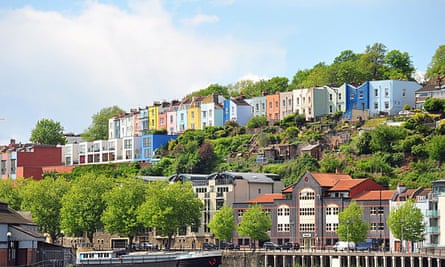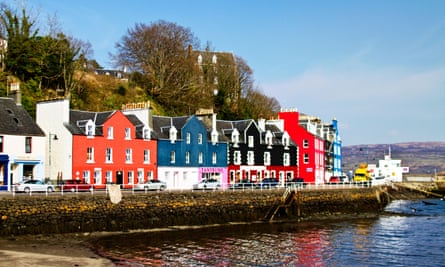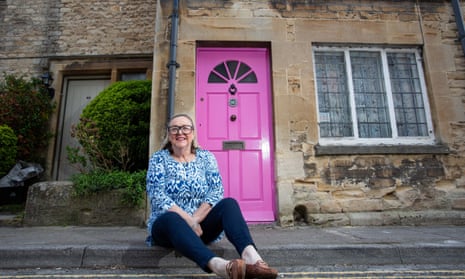Future archaeologists may come to know the early 21st century as the “greige age”, when they start digging up the remnants of buildings painted in knockoff muted Farrow & Ball shades and wonder how we could all be so dull. But there are the brave outliers – those who paint their houses in eye-catching shades or patterns, who risk neighbours’ wrath and sniffy letters from the council.
A woman in Cirencester has had her door painted bright pink (“Flamingo Fun”) for 33 years, but now one of her neighbours has complained to the council, according to the Daily Mail. The council, although apparently not taking further action, had sent her a letter asking her to paint it a colour more in keeping with the conservation area. The house is Grade II listed, so more rules apply, but even if you don’t live in a listed building, can you still paint your house or front door any colour you like?

“Yes, usually,” says the planning and environment lawyer Alison Ogley. “If you want to paint your house a particular colour, then you have particular development rights to do so, but local authorities can remove those rights. Everybody has to check for themselves that there isn’t what’s called an article 4 direction in place in their area. If there is, the rights to paint your house any colour you want has been taken away.”
In 2015, the owners of a bright-yellow house in Greenock, Inverclyde, were ordered to repaint it a less dazzling colour after complaints. Neighbours were angry after the owner of a townhouse in Kensington, west London, painted it in red and white stripes (it has since had permission to be demolished and rebuilt. There have been complaints about that, too). In Camden, north London, there were objections after a woman painted her house a slightly different shade of pink to what it had been.

“Personally, I’m with Le Corbusier who believed that standards lead to perfection,” says the design critic Stephen Bayley. “The townscapes we admire the most are uniform in colour. But there are streets in Notting Hill and Chelsea where residents are in deadly competition to express their ‘personalities’ in colour. I really wish they weren’t.”
But brightly painted houses can become a point of pride – look at Bristol’s colourful terraces, or Tobermory’s rainbow waterfront houses on Mull. In the US, where colourful houses are far more common, the house opposite the notorious homophobic Westboro Baptist church was painted in rainbow stripes. It’s not even a garish colour that can get people talking. When the owner of a house in Leeds painted it all white – roof tiles and guttering included – neighbours seemed largely positive, if bemused (this may have had also something to do with the bronze bust of the composer Giuseppe Verdi by the front door).

Of course, what colour to paint your house is the ultimate privileged property-owner problem, but the decision affects everyone around it. Last year, residents of a street in Gloucester who agreed to paint their homes different colours reported it had increased their sense of community. “Painting the houses has certainly brought a big lift to the street,” one resident told Gloucestershire Live. “It has somehow got [people in] the street talking to each other.”

Comments (…)
Sign in or create your Guardian account to join the discussion